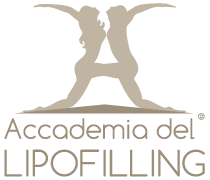Scarring occurs after every accidental injury or surgical intervention, and, however skilled the surgeon or appropriate the suture technique, some people are left with painful scars that persist for many months after the initial wound.
In some cases a keloid (excessive) scarring response can occur, leading to marked, reddened, and often painful scars that cannot generally be treated with further surgery. In other cases, even the normal healing process can result in unsightly scars that are painful when compressed, or even without compression. These painful scars can be caused by numerous factors, including damage to the nerve fibres which transmit pain signals (nociceptive), scar adhesions to the deeper structures, intolerance to slow-absorbing sutures under the skin, or, in cases of accidental injury by contaminated objects, the presence of foreign bodies.
In the first two cases, usually determined by ruling out the other possible causes, the treatment is usually pain-relieving medicine, but recently lipofilling has been used as a more permanent solution. Indeed, a recent clinical trial, conducted in France, has shown the efficacy of fat transplants for this purpose, even in tender scars resistant to painkillers. In fact, 9 out of 11 patients reported considerable benefits, with pain being much reduced or entirely absent [1].
How exactly the injected fact brings about these marked changes is still under investigation, but it is thought that the stem cells and growth factors in the transplanted adipose tissue prompt the “regeneration” of the recipient tissue, alongside the mechanical benefits of softening and filling the painful area. Indeed, autologous (self) adipose tissue grafts from a donor site to a recipient site in the same patient are now a tried and tested technique in many fields of reconstructive and regenerative surgery. Lipofilling has long been successfully used in breast reconstruction surgery and cosmetic body “contouring”, or remodelling, and now, thanks to the increasing confidence of surgeons in the fat extraction and transplant procedures, it is now also being increasingly used in even problematic surgical fields such as the treatment of burns, and neuromas (nerve tumours) after amputation. This makes autologous fat grafts an innovative and promising weapon in the plastic surgeon’s armoury for treating painful scars, whether they occur after surgery or accidental injury.
Lipofilling may be carried out under local anaesthesia, local anaesthesia plus sedation, or general anaesthesia, depending on the amount of fat that needs to be removed, and the size and number of sites to be treated. The duration of surgery will also vary, ranging from 30 minutes in the simplest of cases to 2 or 3 hours in more complex interventions. As with all types of operation, lipofilling should only be performed by a qualified surgeon in a legally certified medical facility. Your surgeon must be able to provide you with clear and exhaustive information regarding the potential benefits and risks of the operation, as well as the potential complications that may arise, which will be influenced by the location of the donor and recipient sites.
